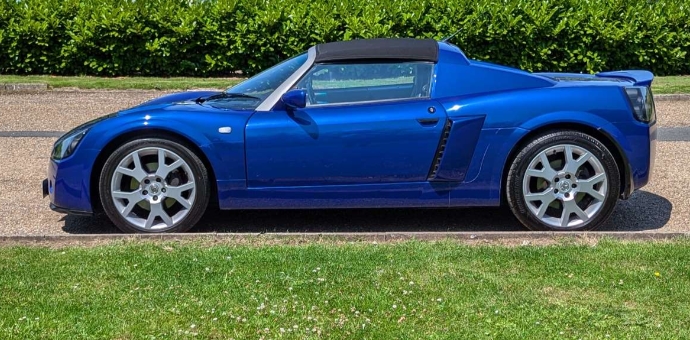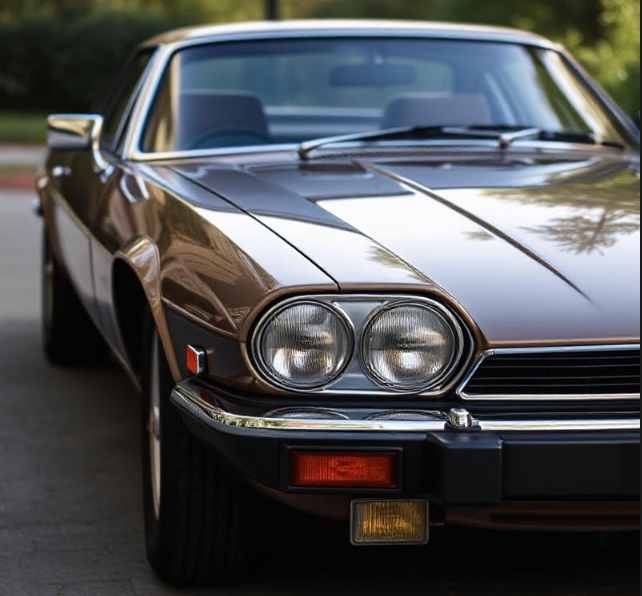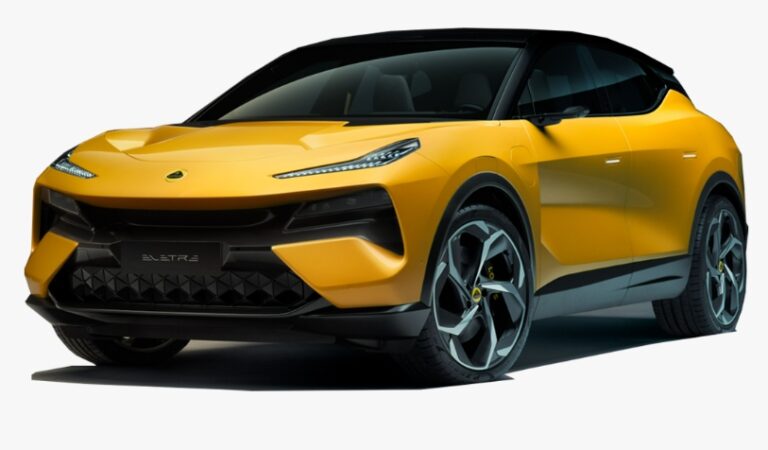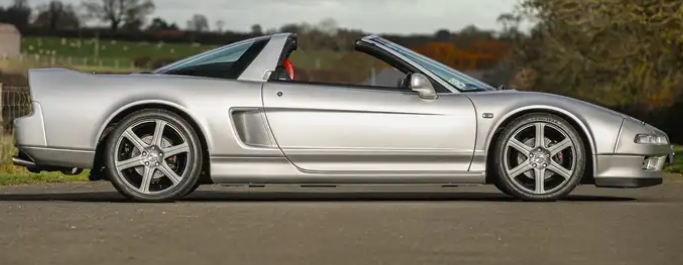The Griffin’s Lotus: Charting the Unlikely Evolution of the Vauxhall VX220
In the annals of automotive history, few vehicles stand out as such a glorious anomaly as the Vauxhall VX220. For a brand synonymous with sensible family transport like the Astra and Corsa, the launch of a raw, mid-engined, two-seater sports car was a move of shocking and brilliant audacity. Produced for a fleeting five years, the VX220 was more than just a halo car; it was a testament to a unique industrial partnership, a showcase for accessible performance, and a future classic from the moment it turned a wheel. This is the story of its evolution, from a pragmatic business deal to a track-honed monster.
A Symbiotic Genesis: The Deal with Lotus (1999-2000)
The story of the VX220 is inextricably linked with that of another legendary British sports car maker: Lotus. By the late 1990s, Lotus was in a precarious financial position. Its iconic Elise S1 had been a critical success, but the company needed a significant capital injection to develop its replacement, the Series 2. The solution came from an unlikely source: General Motors, Vauxhall’s parent company.
GM, seeking to inject some excitement and create a brand-defining “halo” model for its European Vauxhall and Opel marques, saw an opportunity. A deal was struck that would become a landmark in automotive collaboration. GM would provide the funding necessary for Lotus to develop the new, wider, and more modern Series 2 Elise platform. In return, Lotus would grant GM the rights to use this platform for its own vehicle and would manufacture the car for them at their factory in Hethel, Norfolk.
This was no mere rebadging exercise. From the outset, GM was clear that its car, christened the Vauxhall VX220 (and the Opel Speedster in left-hand-drive markets), would have its own distinct identity. While it would share the revolutionary extruded and bonded aluminium tub chassis with the Elise S2—weighing a mere 68 kilograms—it would feature unique bodywork and, crucially, a GM powertrain. The styling was penned by Vauxhall’s design studio under the direction of Martin Smith, resulting in a shape that embraced the “edge design” philosophy of the era. It was sharper, more angular, and more aggressive than its curvaceous Lotus cousin, with distinctive triangular side pods and sharp creases that gave it a machined, futuristic look.
The Debut Model: Vauxhall VX220 2.2 16v (2000-2005)
The Vauxhall VX220 was officially unveiled at the Geneva Motor Show in 1999 and went on sale in late 2000. The launch model was powered by a power plant that was both a strength and a point of contention for purists: the GM Z22SE Ecotec engine. This all-aluminium, 2.2-litre, 16-valve four-cylinder unit was sourced from the much larger Astra and Vectra saloons.
On paper, its output of 145 bhp and 150 lb-ft of torque seemed modest. However, in a car weighing just 875 kg, it was more than enough for spirited performance. The 0-60 mph sprint was dispatched in a rapid 5.6 seconds. More importantly, the Z22SE engine’s character set the VX220 apart from the contemporary Elise 111S, which used the rev-happy but peaky 1.8-litre Rover K-Series engine. The Vauxhall’s larger displacement provided significantly more torque lower down the rev range, making it a more flexible and tractable car for road use. It didn’t require the driver to chase the redline to make swift progress; instead, it offered a satisfying wave of acceleration from almost any gear.
The driving experience was pure and unadulterated. There was no power steering, leaving the wheel to writhe and communicate every nuance of the road surface directly to the driver’s hands. Early models had ABS as an optional extra, and other driver aids were non-existent. This was a car that demanded focus and rewarded skill, offering a level of feedback and connection that was fast disappearing from the automotive landscape. The suspension was tuned by Lotus but to Vauxhall’s specification, providing a slightly more compliant ride than the Elise, further cementing its reputation as the more usable road car of the pair.
Trim Levels: The standard VX220 was spartan. It came with basic cloth seats, no carpets, and minimal sound deadening. However, most buyers opted for the highly desirable Touring Pack. This transformed the cabin’s feel, adding:
Full leather upholstery (available in black, red, or tan).
Fitted carpets and additional soundproofing.
An upgraded Blaupunkt CD player.
Alloy detailing on the gear knob and handbrake lever.
Storage nets and a luggage carrier.
In 2002, Vauxhall also released a limited edition run of 100 cars known as the VX220 Lightning Yellow. These models were exclusively finished in a vibrant yellow paint scheme, complimented by a striking red leather interior, black windscreen surround, and often came equipped with the features of the Touring Pack as standard.
Turning Up the Boost: The VX220 Turbo (2003-2005)
While the 2.2-litre model was critically acclaimed for its handling and balance, the chassis always felt capable of handling more power. In 2003, Vauxhall delivered spectacularly with the launch of the VX220 Turbo.
This new flagship model swapped the naturally aspirated 2.2 for the formidable Z20LET engine, a 2.0-litre turbocharged unit borrowed from the potent Astra GSi hot hatchback. The transformation was dramatic. Power output rocketed to 197 bhp (200 PS), and torque surged to 184 lb-ft. In a car that now weighed just 930 kg, the performance was explosive. The 0-60 mph time plummeted to a supercar-scaring 4.7 seconds, and the in-gear acceleration was ferocious.
The Turbo was more than just an engine swap. Vauxhall and Lotus engineers made subtle but important revisions. The side air intakes, which were purely cosmetic on the 2.2, were opened up to feed the intercooler. Stiffer Eibach springs and re-valved Bilstein dampers were fitted to cope with the extra performance, and the car received a unique “teardrop” style of 17-inch alloy wheels. A small “ducktail” spoiler was added to the rear clamshell for improved high-speed stability.
Visually, the differences were subtle: a “Turbo” badge on the rear, the aforementioned wheels and spoiler, and a V-grille in the front air intake were the primary identifiers. The driving experience, however, was on another level. The raw, connected feel remained, but it was now overlaid with the savage punch of turbocharged torque.
The slight turbo lag only added to the drama, creating a thrilling surge of power that made the VX220 Turbo one of the fastest point-to-point cars on the road, regardless of price.
The Ultimate Expression: The VXR220 (2004-2005)
As the VX220’s production life neared its end, Vauxhall decided to create a final, definitive version. The VXR performance sub-brand had just been launched, and the VX220 was the perfect car to showcase its potential. The result was the VXR220, a limited edition, track-focused weapon and the most sought-after model in the car’s lineage.
Launched in 2004, production was strictly limited to just 65 cars for the UK market, ensuring instant rarity. Based on the Turbo, the VXR220 was subjected to a thorough performance overhaul by the engineers at Lotus and Vauxhall’s performance division.
Powertrain: The Z20LET engine was re-mapped, fitted with revised injectors, and given a free-flowing exhaust system. This pushed power up to 217 bhp (220 PS) and torque to a muscular 210 lb-ft.
Chassis and Handling: The standard suspension was replaced with track-grade, two-way adjustable Öhlins dampers and stiffer springs. The car rode 10mm lower. To provide phenomenal grip, the standard Bridgestone tires were swapped for ultra-sticky, road-legal Yokohama A048R semi-slicks. The brakes were also upgraded with performance pads.
Aesthetics: The VXR220 was instantly recognizable. Most were painted in an exclusive Calypso Red, though a handful of special-order cars were produced in other colors. It featured a prominent carbon fiber front splitter, a larger carbon fiber rear spoiler, and carbon fiber side intake surrounds. The look was completed by unique, lightweight Speedline multi-spoke alloy wheels finished in anthracite.
The VXR220 was the VX220 in its purest, most extreme form. It was a raw, uncompromising machine designed to demolish racetracks. The ride was firm, the tires noisy, but the grip, acceleration, and braking were on a level that could challenge machinery costing three times as much. It was a fittingly hardcore farewell to a truly special car.
.

.
End of an Era (2005)
Production of the Vauxhall VX220 and its Opel Speedster sibling ceased in 2005. The end came for several reasons. The original production agreement with Lotus had run its course, and the GM engines used were not compliant with upcoming Euro 4 emissions regulations. Furthermore, despite critical acclaim, sales were never vast. In total, just over 7,200 units of the VX220 and Speedster were built over five years.
Today, the Vauxhall VX220 has cemented its status as a cult classic. It stands as a brave and brilliant moment when a mainstream manufacturer dared to build a pure, lightweight enthusiast’s car. Its evolution from the balanced, accessible 2.2, through the brutally fast Turbo, to the ultimate VXR220, traces a short but spectacular lifespan. For those who value the unfiltered thrill of driving, the Griffin’s Lotus remains one of the most compelling and engaging sports cars of the modern era.







